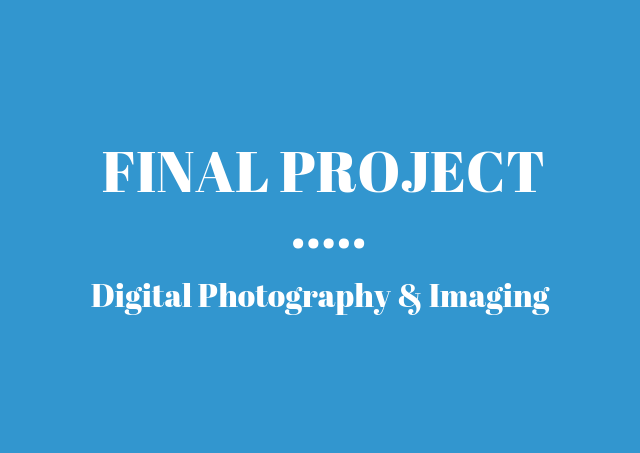INFORMATION DESIGN- EXERCISES
7/1/19-2/2/19 (Week 1- Week 4)
Andrea Vie Choong Jia Qi (0331945)
Information Design
Exercises (Continuous Assessment)
Quantifiable Charts, L.A.T.C.H., After Effects
_______________________________________________________________
Exercises (Continuous Assessment)
Quantifiable Charts, L.A.T.C.H., After Effects
_______________________________________________________________
LECTURES
Lecture 1: MIB Briefing/AE Basics
7/1/19 (Week 1)
In the beginning of this week, we were briefed our module information booklet and the assignments that will be taking place during the module. After that, we did a simple exercise to refresh our memories on animation in AE.
Assignment briefs link:
https://docs.google.com/presentation/d/1ngADOd9LtTpOKFNjm2pIujOlg7MTjc5mhqQmIRl26wM/edit?usp=sharing
Lecture 2: Brief History of Information Visualization
8/1/19 (Week 1)
The next class, we were briefed again on our assignments for this module with Ms. Anis. We moved on to our first lecture on the history of information visualization.
Overall, I learned about how images are often used in information design as we live in a visual information culture. Our lives have NO BOUNDARIES as we are surrounded by INTERNET.
Fig 1.0 Diagram from https://wearecomet.com/how-images-can-help-us-understand-scientific-data/
We are attracted to visual information as we can easily remember them in our brains.
The purpose of using visual information:
- To reveal intricacy of the world in uncomplicated terms that are understandable.
- To add knowledge to information display through spatial, quantitative and chronological relationships.
Fig 1.1 Criteria for visual information
Not only pictures are used in the present, there are also effective in the past as well. When the cavemen needed to communicate to their children.
Fig 1.2 Development of Mesopotamian Cuneiform Script
Maps are also one of the PRIMITIVE forms of information design. It is a visual representation of geography to guide humans.
Fig 1.3 Images of maps
Besides maps, an Austrian political anthropologist believe "words make divisions/pictures make connections." From this, he creates a visual language, ISOTYPE (International System of Typographic Picture Education). This has over 1000 images.
Fig 1.4 ISOTYPE diagram
Lecture 3: Manuel Lima's 9 Directives Manifesto
For this lecture, we did a group presentation on the nine directives manifesto by Manuel Lima.
Lecture 4: Saul Wurman's L.A.T.C.H.
For this lecture, we did a group presentation on Saul Wurman's L.A.T.C.H. It consists of five principles: Location, Alphabet, Time, Category and Hierarchy.
_____________________________________________________________________________
INSTRUCTIONS
Module Information Booklet (MIB)
_______________________________________________________________
_______________________________________________________________
EXERCISE 1- AE Basic
7/1/19 (Week 1)
Instead of doing the same exercise in my last semester, we had to produce a infographic on our own topic. I chose to do on coffee consumption in different places. I looked for different fun facts on coffee and diagrams.
Before I started creating my own infographic, I searched for some inspirational ideas in Pinterest.



Fig 2.1 Inspirational Ideas
Fig 2.2 Composition progress in Photoshop
Fig 2.3 Animating progress in After Effects
Fig 2.4 Final Outcome
EXERCISE 2- AE Dynamic Number
15/1/19 (Week 2)
This week, we did an exercise on Dynamic Numbers. My topic is based on Ethnicity Population in Malaysia in 2018.
Here is my research web links:
After my research, I did the design of my chart in Photoshop showing the different population of each Ethnicity in Malaysia.
Fig 2.5 Designing progress (Photoshop)
After designing, I made a short animated video based on the chart using the techniques learned on making effects on the rectangle and numbers.
Fig 2.6 Animation progress (After Effects)
Here is my final animated video:
_____________________________________________________________________________________________
8/1/19- 14/1/19 (Week 1- Week 2)
We are suppose to quantify (count) the buttons in class and using the data collection we get to create a information poster. The information should be presented in a illustrative visual manner.
We are free to use any method like hand-drawn, digital illustration, pictures, collages, etc. as long as it fits in A4 paper.
We are suppose to do at least 5 different colours including our own data collection.
Fig 2.5 Categorizing buttons: size, number of holes, texture
Fig 2.6 Data collection
Here are the other four different coloured buttons I gathered from my classmates.
Fig 2.7 Data collection: Green
Fig 2.8 Data collection: Pink
Fig 2.9 Data collection: Brown
Fig 2.10 Data collection: Blue
After I collected five different button data collection, I did a rough sketch of my charts on texture and number of holes in the buttons. In my design, I want to create something that attracts children which is colours and cute drawings.
Fig 2.11 Idea sketch


Fig 2.12 References for decoration/background
Fig 2.13 Progress #1
Fig 2.14 Progress #2
Fig 2.15 Final Outcome
EXERCISE 2: L.A.T.C.H. (Location/Alphabet/Time/Category/Hierarchy)
14/1/19- 29/1/19 (Week 2- Week 4)
We need to organize four pokemons into a silent 30 seconds animated video to represent each principle.
Here is the link for the pokemons: https://www.pokemon.com/us/pokedex
I organize the Pokemon I chose to use to represent these 5 principles.
Fig 2.16 (a): Location
Fig 2.16 (b): Alphabet
Fig 2.16 (c): Time
Fig 2.16 (d): Category
Fig 2.16 (e): Hierarchy
After sorting out the Pokemon into 5 principles, I looked for some image references to help design my Pokemon island theme to show the 5 principles.
Fig 2.17 References for my island design
Fig 2.18 Progress in Illustrator
Fig 2.19 Final Outcome: Island
And I organized the elements I drew in Illustrator on Photoshop by layers. It would save less time searching through too many layers if everything was drawn in Photoshop.
Fig 2.20 Photoshop progress (Static)
And finally, the animated part of the diagram is edited using After Effects.
Fig 2.21 After Effects progress (Animation)
Here is my short animated video:


































Comments
Post a Comment